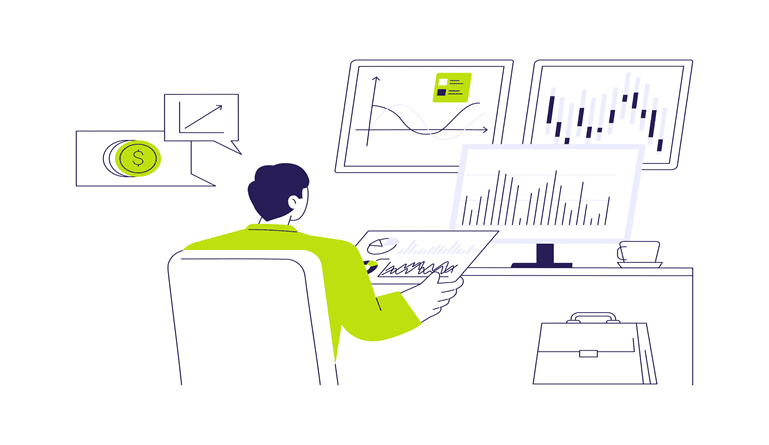Debt financing is one of two primary types of business funding. The other common funding format is equity finance. Debt financing is widely regarded as the most common method of securing funds for a growing business and features both alternative and traditional funding sources.
In debt financing, an enterprise secures capital or funds from a third party and pays back the money borrowed with charges and interests. Under this financing option, you are not required to let go of any equity in your business in exchange for the funding.
How Debt Financing Works
There are three main kinds of loan schemes to take into consideration:
-
Installment loans
Fixed payback terms and monthly payments are incorporated into these small business loans. The finance firm will give you a lump-sum payment upfront, after which the debt will be repaid one month at a time until it is completely paid off. Equipment finance, SBA loans, and terms loans are all common examples.
-
Revolving loans
These loans allow you to borrow against a revolving line of credit that you can utilize, repay, and repeat as many times as you choose. Common forms of revolving loans are credit cards and business lines of credit.
-
Cash flow loans
The lender provides a lump-sum payment to you once you’ve been approved for a cash flow loan. However, instead of setting a period for repayment, you repay the loan as you produce the money that you’re utilizing to pay for it. Many businesses resort to using merchant cash advances and invoice financing when they have an urgent need for additional capital.
(Also Read: Financial Planning | Ultimate Guide for Beginners)
Debt Financing Terms of Repayment
-
Long-term debt financing
In most cases, long-term debt financing is used to finance the purchase of assets like equipment, land, buildings, or machinery for the company. The repayment of these debts and the assets you’ve purchased will continue for over five years.
-
Intermediate debt finance
Medium-sized expenditures may be financed with intermediate debt financing loans and can help the business grow. Their repayment period is within three years.
-
Short-term debt financing
Day-to-day expenses frequently require short-term debt funding. With a short-term loan, you may utilize that money to purchase inventory, pay employees, or buy supplies. Due to the short repayment period of less than a year, these loans are termed short-term. Credit cards are one of the most popular short-term debt financing methods.
Types of Debt Financing
-
Conventional bank loans
This type of loan is designed to aid your company’s growth over the medium- or long term.
Credit unions, as well as commercial lenders, provide bank loans to borrowers. Unlike the loans you can acquire from online and alternative lenders, they are distinct because they tend to have stringent eligibility standards. A major caveat with respect to traditional bank loans is that they usually offer low-interest rates.
-
SBA loans
Loan terms approved by the Small Business Administration tend to be the best when it comes to helping small businesses grow. Often used by enterprises that meet the SBA lending requirements, SBA loans have one of the lowest interest rates and the most favorable repayment conditions.
There are SBA loans that demand collateral and others that don’t. However, collateral requirements are usually lower than what is required for other types of loans.
-
A business line of credit
A form of revolving credit facility with a preset credit limit is a small business line of credit. It allows you to withdraw capital whenever it’s needed.
Additional to offering you the credit option to use, repay, and even reuse the available credit you have, you may as well receive a draw period in which you are only required to pay interest, after which you’ll begin making complete principal and interest payments.
-
Business credit cards
This is a variation of revolving credit and can be provided to business owners of all types. You don’t need a long business credit history or specific minimum annual revenue to get authorized. Instead, your credit history determines whether you’re approved for the credit or not.
-
Equipment financing
Due to the way small firms are structured, most can obtain equipment finance. You can buy something that will be utilized as collateral for the loan, such as if you’re acquiring a vehicle or other form of equipment for your startup.
The lender can take the collateral to cover the debt if the business fails or can’t repay.
-
Venture debt financing
Venture loan funding might help you bridge that gap between equity rounds, if you’ve taken out equity financing but later discover that you need additional funds. There are certain venture lenders that search for funded enterprises so as to offer them venture debt financing.
-
Merchant cash advance
Debt financing comes in several forms, such as a merchant cash advance. However, cash advances are one of the most expensive forms of financing, but they might be useful if you are ineligible for other loans, because of your credit ratings or your time in business.
-
Grants for small businesses
Small business grants offer additional financial resources, but without the burden of repayment. A lot of government organizations and private corporations are able to offer between $500 to $50,000 in grants to assist with your company’s startup or growth.
In what situations might debt financing be appropriate for your business?
It’s vital to ask yourself some questions to decide whether debt financing is the appropriate business move:
-
Should I spend the capital on variable or fixed costs?
Direct cash returns from the funds you’ve borrowed are unlikely when these funds have been spent on fixed costs like office furniture or a piece of equipment. If you go with this choice, you must understand that your installment payments will be initiated immediately after the money is provided, which can increase your debt load. On the other hand, the investment might yield improved cash flow if the money is spent on variable costs, such as on inventory or supplies to produce goods you sell.
-
What stage is my business in right now?
It can be tempting to ask for an infusion of money to get your project moving when you’re just starting out. In the early phases of a business, debt funding is however quite risky. More than 75% of all enterprises lose money before they become profitable. And furthermore, if you cannot repay a loan, your business credit rating will be negatively affected for the long term.
-
Are my customers paying on time?
To stay in business, you must have loyal customers who pay you on time so that you can pay your loan. Most of the time, however, this is not the case. Watch the way your customers pay. Offering financial incentives to induce customers to pay early may make sense.
-
Is my financial structure well-organized enough to make consistent payments?
We all know the truth! Financial genius is not a trait in every business owner. However, it might show that utilizing debt financing could be disastrous – especially if you’re fond of forgetting to repay.
Advantages of Debt Financing
The advantages of debt financing include:
- Helps you retain ownership and control of your business
- Interest charges are tax-deductible
- Reduced interest rates
Disadvantages of Debt Financing
- The requirement of a regular paycheck
- A significant negative impact on credit ratings
- Potential financial ruin
Difference between debt and equity financing
When it comes to debt financing, working with lenders involves borrowing money and repaying it with interest. But when it comes to equity financing, you receive capital in exchange for shares, or equity, in your business.
Prior to making an investment, investors will look at your equity ratio. This score helps them gauge the extent to which you have leverage in negotiating debt.
Final Thoughts
In almost all cases, businesses will need some type of loan funding. In addition to funding growth, additional finances help companies to put money into the resources they require in order to expand and advance. New and small businesses in particular need access to cash in order to buy the many essential company equipment, inventory, machinery, supplies, and real estate. The primary issue with debt financing is that you must be sure that you have enough cash flow to settle the principal as well as interest obligations that come with the loan.








